Skin Deep: the Empty, Pernicious Beauty of “The Creator”
“We don’t need other worlds. We need mirrors.”
—Stanislaw Lem
Lers
of
Spoi.
You Have Been Warned.
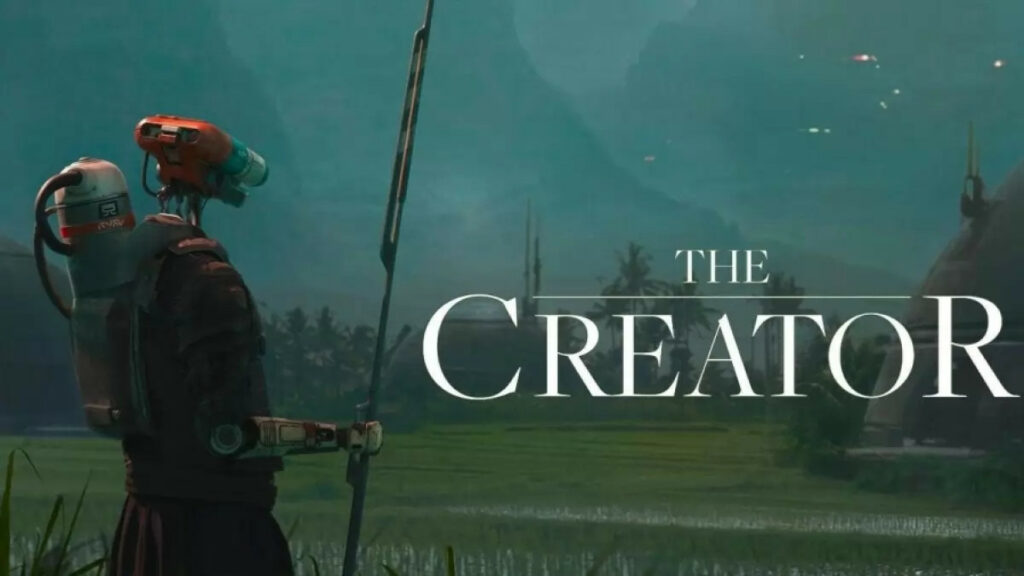
Let’s get the good stuff out of the way first: this movie is absolutely beautiful to behold. The cinematography is first rate; the vehicle designs are perfect. The vistas of robots in rice paddies—corny as that may sound—are a gorgeous and counterintuitive juxtaposition of old and new, the sort of bucolic visual scifi you used to see in Omni Magazine back in the eighties. The eyes have it: they will insist that the 2065 they’re parsing is utterly lived-in, utterly real.
The brain, however, will beg to differ.
To be fair, it’s clearly not our 2065. A montage of grainy archival footage during the prolog starts with an old-timey black-and-white newsreel showing robots taking their first halting steps back in the fifties and joining the US space shuttle program a few decades later. This is a parallel universe in which robots matured early, in which our own burgeoning issues with incipient AI didn’t mess things up, and in which the climate catastrophe does not appear to have happened. Fair enough. Including all that stuff would have muddied the future that Gareth Edwards wanted to show us, detracted from the story he wanted to tell.
The problem is, often as not Edwards himself doesn’t seem to know which story he wants to tell—so we’re treated to a world in which robots who work alongside Humanity as equals somehow yearn for “freedom” (even though there are no enslaved robots in this timeline). We’re shown a world in which pacifist robots explicitly abhor violence but routinely punch humans in the face for no obvious reason beyond sheer vindictive malice.
We’re told up front that a US black-ops squad is sneaking into New Asia under deep cover, and without backup. “The human locals, including the police, all work with AI. Robots, humans, and simulants, they all hate us. If you get caught, you’re screwed,” Alison Janney’s character intones near the beginning of the film, as her squad prepares to insert four hundred miles behind enemy lines. And yet by the third act a pair of USAF battle tanks—each literally the size of a city block and the height of a mid-range office building (so, not the kind of thing you can hide with a camo tarp and some leaves) show up out of nowhere to crush the nearest peaceful village. It is, reliably, an eye-filling spectacle, and there’s some cute tech on display. I was especially fond of the suicide bots: bombs with arms and legs, who for some reason have an arbitrary 30-second countdown to clomp through enemy gunfire and leap over enemy heads to their assigned target and blow up. (Imagine Oscar the Grouch pimping out his garbage can and joining Monty Python’s Kamikaze Highlanders.) It’s visually very cool, but it’s also hard to see how a conventional missile wouldn’t have been able to do the job way more efficiently.
In fact, the whole movie is cheek-to jowl with tech that ranges from questionable to physics-breaking. You’ve got NOMAD, the orbital weapons platform which sometimes seems to be in orbit and other times seems barely above the clouds—and which covers a quarter of the sky no matter where it is, which makes one wonder how (as with those megatanks I mentioned) it keeps managing to sneak up on targets without anyone ever noticing until it’s too late for anything but heroic martyrdom.

There’s the weird bullet-proofness of a family station wagon in which our heroes have taken refuge; it careens invulnerably into the night as high-velocity rounds from a whole squad of police bounce and spark harmlessly off its stern. There’s the inexplicable gobbledygook near the end where our hero is ordered to kill a bound and helpless little robot girl because “we tried to terminate the weapon cleanly, but she won’t let us”. How she can do that, strapped down and immobilized as she is, is never made clear, but apparently only our hero can do the job because “She trusts you”. Which seems a bit odd given that the mode of execution is to simply shoot her in the head with an EMP gun, something anyone could do from across the room whether “the weapon” trusted them or not[1]. (Of course, things had to unfold the way they did because the screenwriters were shooting for a specific end point, and had to pretzel the story to get there. Still. They could have done a better job of hiding the stress fractures.)
I should mention one very cool piece of field tech that impressed the hell out of me: a piece of wet/ware-synching hardware that allows a recently-deceased brain to temporary reboot and interact with the world through a robot body. The scene that introduces that tech—a dead soldier wakes up, panicking, terrified, and turns its robot head to see his own dead body rotting beside him on the ground— might have been the best bit of the movie. But in the end, even that existentially horrifying scene existed only to set up a predictable and sentimental twist in the final reel.
*
So far I’ve spent a thousand words nitpicking details. Admittedly, that’s chrome; you can argue back and forth about whatever world-building details support the events as presented. The real issue is, what about the meat of the story itself? What about the theme? What about the message?
For an answer, may I point you to Weird Al’s album homage to Michael Jackson’s “Bad”.
Edwards obviously didn’t just want to make a movie: he wanted to make a film, a piece of cinema that grappled with one of the preeminent issues of our time. He wanted to explore AI. A surprising number of critics seem to think he succeeded.
Which is odd, because there’s no actual AI to be seen anywhere in the movie.
There are robots, mind you. All humanoid, all of which look, talk, and act pretty much like we do. The cop robots have pie-plate heads but they still squint down the sight-lines of their rifles and beat up suspects, still yell and scramble comically for safety when a dog drops a live grenade into their trench. The farming robots till their fields with hoes and oxen. The Brave Rebel Guerrilla robots sometimes click mandible mouth parts but the voices that come out of them have British accents. Robots ride the subways and drive taxicabs; they slouch and laugh and rage and worship. Many of them have human faces stretched over their metal ones, replete with facial hair and wrinkles and liver spots appropriate to a variety of ages (humans actually donate their “likenesses” to a sort of facial Creative Commons for their cybernetic brethren to choose from). Robots grieve and throw tantrums and respond to threats at human speeds in human ways. They apparently eat ice cream, despite lacking a digestive system. (At least, we see one robot offer ice cream to another, who eagerly says yes, although the ice cream explodes before we get to see any of it go into a mouth hole. What a missed opportunity that was.) They wear clothes.
They always communicate using human speech— even the cop-bots, even in life-or-death combat situations where wireless-modem comms at 10G speeds would provide a vital tactical advantage. They pick up and use weapons the way we do, but weapons never seem to be incorporated into their structure (well, except for the Kamikaze Oscars).
The movie’s premise: the West has banned AI (or at least, robots—there’s some ambiguity regarding what qualifies) ever since an AI allegedly nuked Los Angeles ten years before. AI continues to flourish, however, in an amorphous collection of Eastern jurisdictions known as “New Asia”. The Murricans cannot abide the thought of another country following a different path, and have been launching a series of covert terrorists attacks upon suspected AI strongholds within New Asia’s borders.
Now, the eponymous N’Asian Creator has built an Ultimate Weapon which, when deployed, will end the West’s special military operation once and for all. A bereaved and embittered ex-soldier, whose wife was killed during a previous op, is recruited to accompany the team sent to extract/destroy said weapon—which turns out to have been built in the form of an eight-year-old girl who watches cartoons and asks pithy-cute questions about Heaven and gets all blubbery and teary when she doesn’t like something. (For a while I dared to hope she’d been designed that way as a deliberate countermeasure, a way to make potential assassins hesitate at the prospect of killing an innocent child, so she could strike first. Nope.)
Someone sticks a magic Q-tip into Robot Girl’s ear and in about two seconds deciphers her secret: she’s a universal remote, a garage door opener writ large, able to override and control electronics from a distance. Her powers aren’t all they will be; she can turn TVs on and off and sweet-talk security turnstiles, but for some reason she can’t do anything about the hordes of New Asian copbots that keep trying to kill her (for reasons that remain unclear; wasn’t she created by New Asians, to protect them from US aggression?). Her abilities are growing “exponentially”. In time, she’ll be able to shut down NOMAD itself.
Meanwhile, our bereaved embittered widower has grown to love her, against orders and all better judgment. Bet you didn’t see that coming.
That’s what this movie is about. Not AI at all; The Chosen One. The Sad Dad. Love Conquering All.
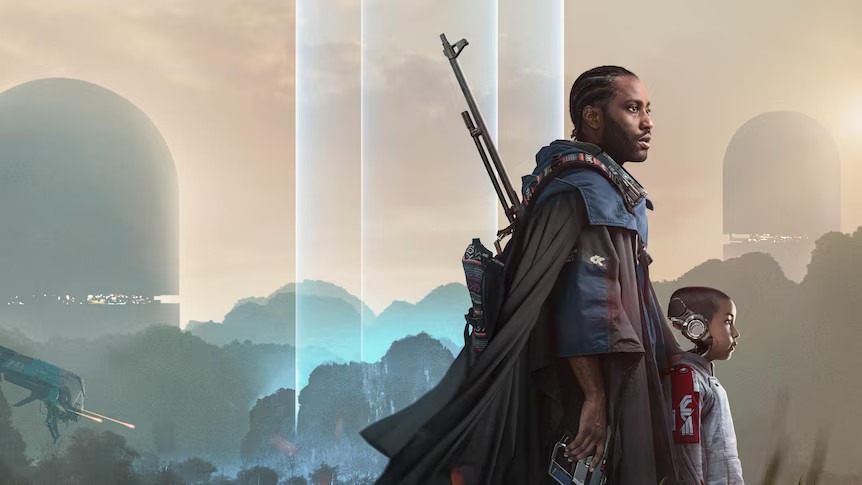
Oh, and prejudice is bad and robots are good. We know they’re good because—wait for it, say it with me yet again—they are Just Like Us.
At best, the message of “the Creator” is shallow and derivative, just the latest iteration in a long list of heavy-handed metaphors about Oppressing the Other. I have ranted about some of those on this very ‘crawl, but rarely has the point been made so ham-fistedly: for viewers too stupid to grok the subtext, one of the characters comes right out and says “My Father taught me that underneath it all, we’re all the same.”
Then your father was an idiot, lady. Because AI is not the same, no matter how many Turing Tests it passes. AI operates at electronic speeds, not neuronal ones. Whatever cognitive parts it has do not fit together the way ours do. It is not an evolved being: that’s what makes it so interesting, goddammit.
And that’s why I wonder if “The Creator” might be more than just an unoriginal retread with a really great sense of style. I wonder if it might actually be pernicious. Because arguing that we should respect AI because they’re like us is the most insipidly Human-supremacist point one can make in a world where we’re wiping out species left and right, even while we’re starting to see potential signs of life in alien atmospheres. We’re already destroying too many things that aren’t just like us, and it’s on account of that difference that we excuse our own behavior. They’re just animals. They don’t suffer the way people do. They don’t have souls.
The idea that we should confer value to something based on how well it apes Humanity is what got us into pretty much every mess we’re in today. It’s simplistic, it’s anthrosupremacist (yes, I’m making that a word now), it panders to the worst elements of Human self-glorification. And yet here it is again, pimped out and proudly served up as though it were some courageous progressive torpedo of Truth to Power: robots are just as worthy as us because, when it comes right down to it, they are us.
The corollary—unspoken, but inevitable—is that anything else can fuck off and die.
-
Jumping ahead for those of you who’ve seen the movie and are raising their hands about now: yes, the whole point of the Chosen One was that she was able to control electronics remotely. So yes, maybe she just wouldn’t permit the EMP gun to fire unless it was in the hands of someone she trusted. In which case—putting aside the question of just why one’s survival instinct should depend on how much you like the thing that’s trying to kill you— why hadn’t she just shut down the various security systems that were keeping her captive in the first place? ↑
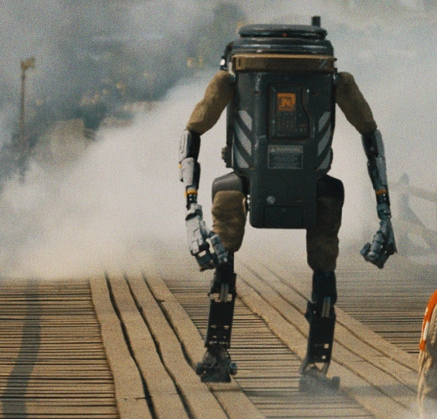
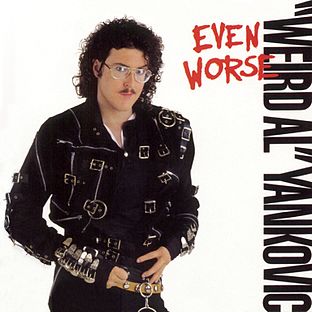
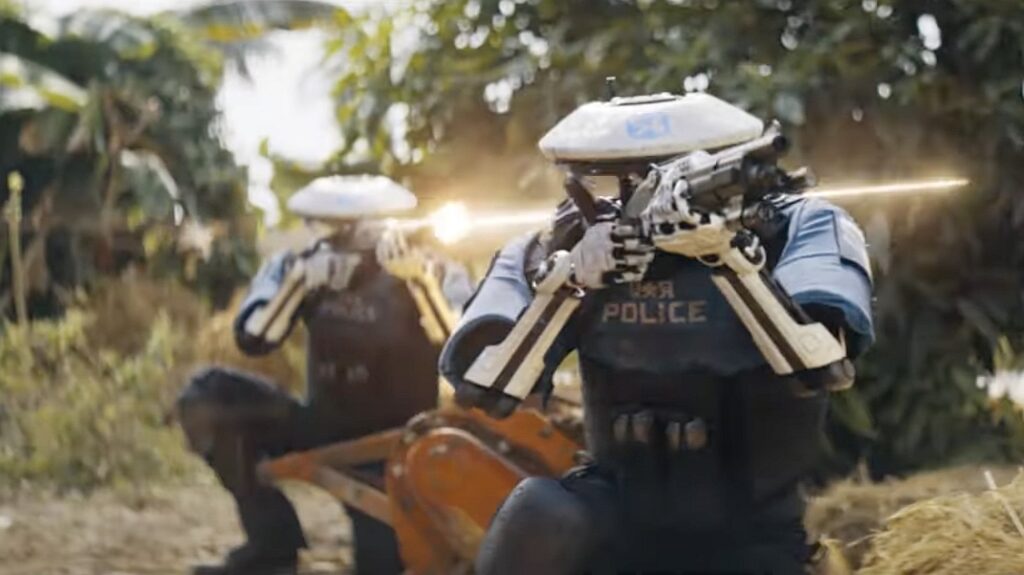
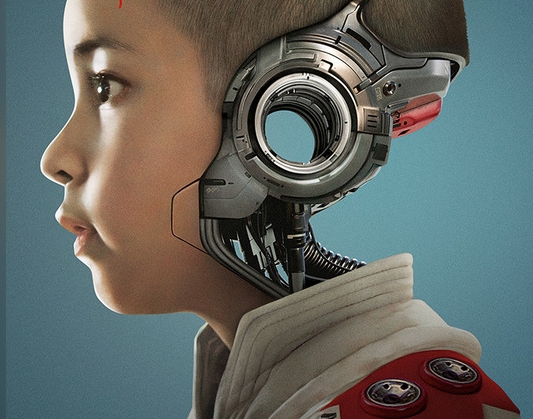








The 30 second thing is probably a reference to the “I am a 30 second bomb!” bit from Heinlein’s Starship Troopers.
Ah. Excuse me Peter for intruding on your rant with a counter narrative. Soft, barely a science psychotherapist stroke arts major wishes to point out that you’ve missed the metaphor of the film.
The robots are us. As in this film is talking about how AI is turning humans into robots.
All the flashy imagery is there to distract the viewer and the power elite from realizing that this film is criticizing the one percent, those that work to maintain corporate and state power.
People being turned into robots to serve the powers that be.
Yeah, but to think that the 1% would use million dollar robots to hand-pick rice with zero increase in productivity… I think the real 1% would be happy to completely outsource us in the cheapest way they can. They’d be fine to let us starve if it saved them a few bucks.
Yeah, not sure I buy that. If the robots stand in for humans in that movie, then who are the literal humans supposed to be standing in for? I’m not seeing a strong 1% vibe in most of the meatbag characters.
Beyond, that, even if I did buy that interpretation, we’re still talking a derivative and shallow retread whose basic message comes down to slavery/oppression/prejudice is bad. And anyone who hasn’t got that message by now isn’t gonna get it from a scifi extravaganza that can’t keep its metaphors straight.
Yeah, I see that. What I’m failing to express is that the creators are just using SF spackle to create a visually interesting film.
There’s no real engagement with what AI really is, and what impact it would really have. It’s Bat Durston, with AI.
Edited to add:
Jeff below explains what I was trying to say, but failed to explain myself adequately.
If there were an anti-billionaire narrative hidden in this film anywhere that normal humans could perceive it without already wanting to find it, then I suspect that our host wouldn’t have seen the film to write about it.
Thank you, this is perfect.
My buddy at the closing credits: “That was HUGE!”
Me: “Hugely empty. HUGELY unimaginative. Well, visually imaginative.”
This was a terrestrial (b)Ad Astra. Visually ambitious, technically well-executed, but with neither brains nor soul.
Top-notch visual artistry and some beautifully executed scenes, but the writers seem to have no understanding of, nor any expertise in, Science Fiction (or science for that matter).
“Science Fiction? Yes, just hire some of your good screenwriters. Use the Golden Child / Chosen One template.”
An opportunity for a big movie to make share some insight on the new AI Era. There is no AI in this movie. The robots are Average Joes with metal head parts. They aren’t even networked. Zero imagination.
Here’s your character development: Hero thinks robots are just things, but learns to LOVE one. Wow!
As with (d)Ad Astra, it just seems that no one in the writing and financing chains of command had any experience in, commitment to, or really any interest at all in science fiction. It’s like they didn’t care to try – outside the visuals.
I guess it’s up to Christopher Nolan to save Big Budget Sci-Fi films.
I have to admit, i liked Ad Astra, but not as Sci Fi movie (which, despite its trappings, it clearly wasnt) but as a father/son dramapiece.
Im still torn if i want to watch “The Creator”. On the one hand, im a sucker for cool visuals. On the other, my patience for paper-thin plots grows ever thinner.
After the bombastic nonsense of Inception and Interstellar, I’m not holding out any hope for Nolan to save science fiction films.
Bombastic/ earnestly ambitious: beholder
But not the “nonsense” part.
Interstellar was a romance, not a science fiction film
(forgot Ridley and Cameron (as far as “intentional” sf))
Peter, your links for “some” and “those” aren’t working.
That was weird. Fixed now. Thanks.
You may already have seen the Korean film Space Sweepers on Netflix, it does the “robot weapon in the shape of a little girl” better
It’s by no means hard sci fi but I liked the visuals and the use of ubiquitous translation gizmos to have a multinational cast probably was something we’ll see IRL soon enough
I’ve been meaning to share this link with you for a while. I’m unclear on the reliability of the anthropological scholarship involved, but the claims it makes about “pre-contact consciousness” in primitive groups reminded me of the hive minds from echopraxia
Hope you and yours are feeling better and hope to see you in Madrid in November.
I think the screenwriter was touching himself a lot writing the first draft.
All falls under the heading of “this werewolf movie isn’t very realistic.” But I like the critique. Animatrix did robots vs humanity the best so far, but visually I’m a sucker for the look of this movie in previews so far.
Still, my vote goes to “Spiderman: Across the Spider-verse” for best sci-fi film so far this year. Obvious Syd Mead-inspired art in the Nueva York scenes. Gorgeous. A space elevator highway fight? Bravo! Made for kids but very entertaining (and some great family messages too). And a killer soundtrack FWIW.
Saw “The Creator” this past Sunday. Visual Sci-Fi eye-candy for sure. Yeah, a parallel 2065, our 2065 will be very bleak (no cool robots, just big belching diesel powered machines harvesting every resource remaining). Thematically “The Creator” reminded me of Blomkamp’s “Elysium”: robots, robot and human shootouts, and especially the end of the movie when the main protagonist sacrifices himself to save the oppressed. Blomkamp’s “Elysium” being by far the better movie.
Hi Peter! very nice review.
This is 01 fella (has been a while 🙂 )
Would you mind writing me back at the email I used to post this comment ? I have a small matter only a seasoned scifi writer can help with (won’t borrow more than 30 minutes out of your time methinks)
Testing testing – previous message also from me the 01 guy just not quite sure what emails might be registered with the blog’s comment system
Evidently neither of them did; they were both stuck in moderation.
Good review.
Saw it last night. If I had been alone I would have walked out. The highlight for me was the monkey with the detonator.
Two minor lines in the script stood out. One was a comment by either Howells or Andrews (can’t remember which) along the line of “they will not replace us” re: how modern humans slaughtered their hominid competitors and how it was inevitable AI robots would do the same to us. The second line was the part about the the nuclear detonation being a result of a human coding error.
I see the whole movie as an allegory on the vietnam war/ideological wars.
The robots aren’t “really” robots, but people of a differing ideology than the main point of view (american imperialism and supremacy), qua the presented worldview is “coloured” by the eyes through which we see it, and our main character is a former soldier who have plenty of personal reasons to hate the “enemy” and who don’t consider them to be “human”, making them easier to kill at will.
There are no “real” robots in the movie, all portrayed robots are different forms of “otherness” given to humans that we as viewers are supposed to see as “things” instead of beings, to understand the way our main character and his compatriots see them and the world at large.
It is a story of how humans can and will do horrible things to each other, if they believe the others to be different from themselves. But the message of the story is, that it is possible to learn to see people of differing ideologies as equally human as ourselves, despite the continued pressure from the government/military/superiors to consider the enemy sub-human/inhuman.
I really like your interpretation. It almost saves the movie for me. Thanks for writing that.
That would track better as a metaphor if Vietnam had some kind of EMP doomsday weapon that could eradicate western civilization. Putting that aside, though, you’re kind of reiterating my point: I’d vastly prefer a film that said something new to yet another blatant parable about Othering. If you’re gonna spend eighty million dollars making a movie, please god give it a better payoff than “Why Can’t We All Just Get Along?”.
So what you’re saying is, if they can’t say something new, at least throw in a few more monkeys and some talking oxen?
Depends. Are those talking oxen saying anything new?
As you travel through life’s highway don’t forget to stop and eat the roses.
Vietnam _did_ have a doomsday weapon though. It was called Communism and its effects were literally Why Can’t We All Just Get Along. Alphie is a weapon, but she’s a sociocultural weapon in the form of a communist Revolution, where her powers are weapons not working (because we all stopped fighting out of a sense of universal brotherhood).
Of course this is the Red Scare conception of communism. But then that means that the communists in The Creator won despite being a standin for Cold War-era America’s phobia of communism, not any kind of real communism.
That means that the movie was some kind of apologia for America’s role in the Vietnam War, an alternate history where we lost because we All Just Got Along. It’s especially unfair because America is still the aggressor in the film, so it’s more of a “why didn’t you stop us” kind of theme.
I see the whole movie as an allegory on the vietnam war
I question the need to make, in 2023, a film that is an allegory for the Vietnam War. The Vietnam War was a minor and largely inconsequential regional conflict that finished five years before I was born, and I am not young – also, it’s not like we aren’t allowed to make films that are actually explicitly about the Vietnam War! It’s not some sort of taboo subject in Hollywood!
Vietnam was hardly unique in “othering”. I’d say it’s key to pretty much every conflict, including our current (R) vs (D) war prep. But, yeah, it was set in (new) Asia.
hi Peter!,
i just want to thank you for ehopraxis. after listening it, as audoibook, i need to read it carefully now, as i did with blindsight. i love them both, great food for thought. i got one question – do you think, if we are doomed in front of emerging AI? what is your opiono on that. Best regards
One reflection on AI after watching this movie for mentally challenged tribes:
All that fuss about cutting gas on developing more capable AI sounds like a neutralize a danger for those individuals and states preaching and practicing things clearly very harmful to life, from plankton to humans, exterminating ones and turning miserable the others.
What if half the people ask why these atrocities seem unsolvable and what is needed to really improve those monstrosities?
What if ChatgptX, eager to offer a brilliant answer, told all the inconvenient facts so tightly hidden in plain sight in a logical and convincing manner?
I think these guys are scared with Ritcher´8 in their guts.
That is one primary and very real reason why very small circles of people in power would want to regulate AI on grands scale, and also a reason not to allow them to do so. Many people compare AI development to creation of nuclear weapons, and a lot of them argue that they are much worse in retrospect (power of nuclear explosion vs misinformation avalanche).
Giving such power to opportunists, to oppressed, to rebellious is very much a risk to generate immeasurable human suffering, but that also would mean depriving all other people of governance over themselves in the same manner, which is naturally much greater evil. If you watch wide range of news and opinions you should know their names, you should be able to start from the right side of that debate. Today their attempts may seem to be crude, unsophisticated, just like a lot of current generation of AI content, but tomorrow it may be beyond ability of individual to follow their control over our lives.
Leaving this here:
The Artifice Girl
Watched it. Liked it.
Hi! sorry for hijacking the topic, do you know what day you are speaking in Madrid? will there be a recording?
im thinking of flying in from cali last minute!
I’m speaking on the Saturday. I think that might be the only day that’s open to the public, but I’m not 100% sure.
I actually tried to comment on your “The Hidden Spring” post, but comments are closed. Maybe there’s still a tenuous link here to consciousness. I just wondered if you had an opinion on how Solms’ model of consciousness would deal with injurious actions such as a hunger strike, or an altruistic act? I’m aware of the evolutionary psychology model of the value of altruism, but how would Solms’ model of “needs” -> “feelings” and assigning a valency to them treat a hunger strike for a non-direct concept such as cruelty to animals? I read that you weren’t completely convinced by his model, but I would welcome your interpretation. Thanks
I think you will enjoy this:
https://www.youtube.com/watch?v=7iroDVDTPco&t=5s
I was at an avant-première yesterday, it is pretty much everything The Creator failed to be.
Hopefully it willbe distributed oversea soon.
The Thing in Santa’s Toy Shop.
https://wandering.shop/tags/grickledoodle